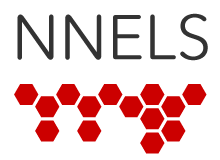The Accessibility Testing Framework
NNELS’ accessibility testers, profiled in an earlier story, are an impressive team of employees, whose work will benefit countless readers, publishers, employers, librarians, and more. With the project being funded in part by the Government of Canada’s Social Development Partnerships Program - Disability Component, NNELS was able to hire these folks, and enable their ambitious, important projects, including accessibility testing.
In order to conduct systematic, standardized assessments of EPUB files and mainstream reading applications, Daniella Levy-Pinto, Accessibility Testing Coordinator for NNELS, developed detailed sets of criteria, including step-by-step processes, which testers used in their evaluations.
For assessing EPUB files, testers opened the files in a variety of reading apps, including MS Edge, VitalSource and EasyReader for Windows; iBooks, Voice Dream Reader and Cloudshelf for iOS; Voice Dream Reader, Simply Reading and EasyReader for Android; and Adobe Digital Editions and Apple Books for Mac OS. The testers navigated and explored each file, running through the established list of criteria. Results were recorded in an Excel file, including specific details about the overall usability experience (i.e. easy or difficult to read and navigate, etc.). Some of the testers delved deeper into the code and searched for individual tags in the XHTML markup. They also used automated tools such as DAISY’s ACE accessibility checker (a tool that helps evaluate accessibility features) to cross-reference their findings.
For mainstream reading applications (generally accessed through users’ individual libraries) such as OverDrive, RBdigital and PressReader, testers assessed the entire user experience, including setting up a user account, searching for resources and navigating results, checking out titles, and reading content. Testers worked through a list of questions and criteria to compile their responses and reflections.
What Did We Learn?
The rigor of the accessibility testing led to the identification of a number of issues that can make an eBook or reading application inaccessible and/or difficult to use.
For EPUB files, the following top issues were noted:
- the use of visual style rules to provide structure and organization to the content, instead of using modern semantic HTML elements, such as headings Images with no descriptions;
- fixed layouts that do not allow readers to adjust font size or colour contrast; and
- tables that appear as an image rather than text embedded in a table format.
For mainstream reading applications, the following top issues were noted:
- unlabeled buttons or links;
- disorganized or cluttered interfaces; and
- difficulties with gestures and controls, i.e., reaching elements and activating controls via the keyboard or with common swipe gestures.
How Can We Fix the Issues?
Participants of the NNELS Accessible Publishing Summit, held in Toronto on January 28 and 29, 2019, were able to see first-hand what it is like for readers with print disabilities to read EPUB files with a screen reader or Braille display, when the accessibility testers provided demonstrations to participants in small groups. Publishers, editors, government workers, and librarians were able to see how challenging it can be to navigate an EPUB without, for example, headings separating sections, or page numbers. There was overwhelming support for finding solutions to produce born-accessible ebooks.
Accessibility tester Steve Murgaski (seen from behind) shows Accessible Publishing summit participants how to navigate a book using a refreshable Braille display.
The good news is that the accessibility testers have worked hard to create and share detailed recommendations for improvement, that publishers and developers will be able to take into consideration. People want to work toward a more accessible world, and we are doing everything we can to make sure that they know that help is available. In addition to the reports and assessments created by NNELS’ accessibility testers, content creators can also rely on many established criteria and standards, such as the Web Content Accessibility Guidelines from the World Wide Web Consortium (which provide guidance on making web content more accessible to people with disabilities – and is also applicable to app development), and the EPUB 1.0 Accessibility specification (for making accessible ebooks).
Why Does Accessible Publishing Matter?
Accessible publishing matters because reading matters. Everyone should have access to the information they need for education, for full participation in the workforce, and for their daily reading pleasure. Having access to reading materials is a critical component of equal opportunities for all.
When a website or EPUB file is properly designed it is flexible and allows anyone to use it in a way that works best for them. From aging populations who need to adjust text sizes to read materials, to people with visual impairments that rely on assistive reading technologies, proper design enhances the experience for everyone.
What Are the Next Steps?
The good news is that we can make small changes today that make an immediate impact on the lives of children and adults with print disabilities in our country. Publishers and reading app developers have been provided with detailed reports which include straightforward recommendations on how to improve their products. Additionally, NNELS conducted workshops with publishers across Canada to share how to fix the most common accessibility barriers. A concise version of these workshops is available for viewing here. We are happy to share the aggregated findings of our accessibility study with libraries, publishers, alternate format producers, and others that may find the information helpful. Check out our Documents and Resources page, where you can find Best Practices, based on the Publisher Audits, reports on library reading apps, and more. Together we can make ground-breaking progress towards a fully accessible publishing future!

